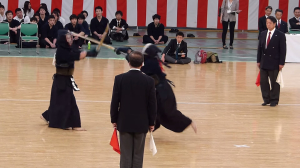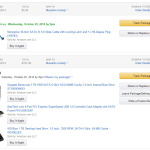At the beginning of this month, we have a very young champion at All Japan Kendō Championship. His name is Yuya Takenouchi, ony 4-dan. It is very amazing for a young person like himself to win one of the great tournaments in the world. I would like to congratulate him for his great achievement.
There are some concerns I have after watching the tournament and having conversations with my fellow kendōists. It is not about how he won the championship. It is about refereeing. But it is not about misjudging.
Kendō has become very competitive. And those competitors are seeking how to strike before their opponents get them. So they train very hard physicality to increase their speed as well as their techniques. If you watch All Japan Kendō Championships from 10 or 20 years ago, you can see how fast kendō has gotten for the last few decades.
Since kendō has become more competitive, of course competitors develop techniques, intentionally or unintentionally aside, to score points in shiai. And of course they are not always following the application of the principles of the katana. My concerns are here.
- Giving a point too early,, i.e. before showing zanshin.
- Bad hasuji, the direction of the blade.
- Tendency of “flashy” techniques
Giving a point too early, i.e. before showing zanshin
I must be careful with this. What that means is that a referee gives a point to a competitor at the moment of their strike without taking zanshin into account. A valid cut consists of vigorous kiai, good posture, correct hasuji (the direction of the blade), striking a correct target with the correct part of the shinai AND zanshin.
I used to think that they, kendō practitioners, would show zanshin after their strike. I took it for granted. But I changed the way I do shinpan now. I, personally, want to wait to give a point until they show a proper zanshin. As a result, my flag goes up a second after the other shinpan if the other shinpan are giving a point. Yes, it is possible to cancel the point given if they “misbehave” after their strike. But we should give a point after competitors show a proper zanshin. This argument will lead to No. 3.
Bad hasuji, the direction of the blade
Please take a look at this video. Watch carefully the direction of the shinai when striking men.
http://youtu.be/5Wg955dJIbE?t=3s
Hasuji is very hard to see. It has been always hard to see the hasuji when striking dō. But as mentioned earlier, kendō has become so competitive and fast, it is harder to see the hasuji correctly.
There was a web newspaper saying “kendō should introduce a video judgment or not”. I do not agree with applying a video reply in shiai but it should be a good idea to practice refereeing using a video reply. We can use videos from the past and talk about why it should or should not be a valid cut and we can apply a video camera at a shinpan seminar and use a reply when a question arise.
My personal opinion is that we must follow the principle of the katana. Without that, kendō becomes a hitting game. So getting a valid cut with the correct hasuji is a “must”. So shinpan has a great responsibility to get this thing right.
Tendency of “flashy” techniques
This is particularly about dō strike. There is a strong tendency to raise the right hand after the dō strike and spin around showing the back to their opponent. This became really popular. I do not know how, when and why but this is what you see in many kendō shiai now as if it is the right way to strike dō. One hypothesis is that it is because so flashy that increases the likelihood of getting a point. It is only a hypothesis.
I myself must be careful about the raising the right hand after striking dō. It is very easy thing to do because it makes “going forward” much easier. I must execute a dō strike like a 6-dan now. Anyway…
The spinning to the wrong way should be corrected and this zanshin should not be given a point. I thought about a possibility of facing a situation that you have to show your back after striking a dō by spinning the wrong way. At this very moment, I cannot think of any situation like that.
I am not sure if this is considered to be one of the right zanshin now but certainly this was something I was told off about when I was a child.
I really think these should get more attention and properly approached to keep the principle of the katana.


